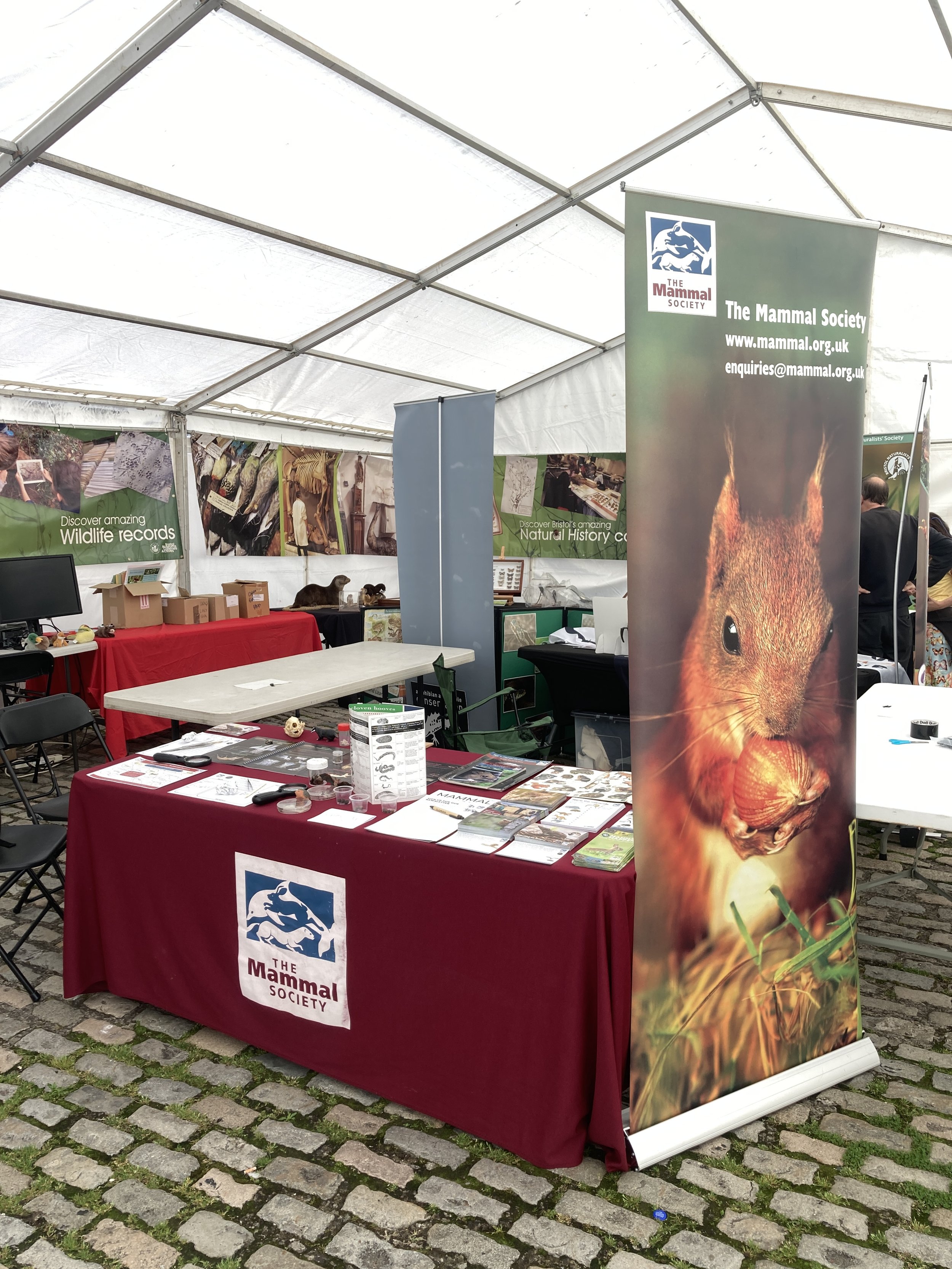A Weekend of Pellets and Poo – Festival of Nature 2024
Mammal Societies stand at Festival of Nature.
The Festival of Nature in Bristol is the largest free celebration of the natural world in the UK. Recently I had the pleasure of attending the event with the Mammal Society. It was a busy weekend with lots on, and it was amazing to see so many environmental organisations, both local and national, sharing their work with the public. Our main objective of the weekend was to promote the ‘Searching for Shrews’ project, as well as to raise awareness of mammals in general.
Searching for Shrews is a Mammal Society project which aims to use citizen science to monitor the spread of the non-native Greater White-Toothed Shrew (Crocidura russula) in Britain. It is a native to mainland Europe and Northern Africa, with their origin in Britain currently unknown. The main concern is the potential threat to our native shrew populations, as when this species was introduced to Ireland it wiped out local shrew populations.
Britain has three native species of shrew:
The Pygmy Shrew (Sorex minutus), which is our smallest native mammal species.
The Common Shrew (Sorex araneus)
The Water Shrew (Neomys fodiens), which is one of very few mammals to have a venomous bite.
Many people do not know a lot about shrews, which are quite interesting small mammals. Despite their appearance they are not rodents but are actually insectivores, more closely related to hedgehogs and moles. Due to their metabolisms shrews are almost always eating and can eat up to 125% of their body weight a day. As well as this shrews do not hibernate, and to make sure they consume enough food in the winter they shrink their bodies by nearly 30% and gain this size back in the spring. This unique adaptation, which is found in no other group of animals, includes their skulls and brains!
The ‘Searching for Shrews’ project is relying on citizen scientists to dissect owl pellets and identify what species are contained within them. Barn owls eat small mammals, such as shrews and rodents, whole but they cannot digest their fur and bones. Like lots of birds, barn owls regurgitate the undigestible material into what is known as a pellet. These pellets can then be dissected to understand what the owls are eating, and therefore what small mammals live in their environment. Over the course of the weekend we had many people give dissecting owl pellets a go, and they found this to be quick and rather enjoyable.
Robson helping to dissect an owl pellet.
In owl pellets we can find various bones, however the easiest parts to identify are jaws and skulls. The first step is to look at the front teeth. Are they big and yellow? If so then they belong to a rodent. If they are not then they are a shrew’s. Another identifying feature is that generally shrew skulls are much smaller and thinner than rodent skulls. For the project we need to differentiate between rodent, native shrew, and non-native shrew, however if you look more closely at the dental configuration you can identify which species you have.
The next step is to identify whether the shrews present in your pellet are native or non-native. All of our native shrews have red tips to their teeth. These red tips are iron deposits which are to protect their teeth. This is because our native shrews are relatively small, and their large appetites can risk damage to their teeth. The greater white-toothed shrews do not have these red tips as they are significantly larger and therefore their teeth do not need the reinforcement.
Following these simple steps allows us to monitor the spread of the non-native shrews and monitor our native shrew populations. So far greater white-toothed shrews have been detected in County Durham and Nottinghamshire, however the search has only just begun and we need to be searching across Britain. The Mammal Society are asking people to either help find owl pellets or help dissect them to support this nationwide monitoring effort.
If you want to learn more about the ‘Searching for Shrews’ website you can visit the project page here.
Robson discussing “whose poo” with attendees at Festival of Nature.
Alongside our shrew shenanigans we were also showcasing other mammal signs. Our main and most popular was our “Whose Poo?” game where the public had to try and identify 4 mammals from their poo’s. The rabbit was by far the easiest, with the otter a close second due to its fishy smell. The harder two were almost identical and a lot of people were shocked to find out these two poos came from two very different animals, the mountain hare and the red deer! We also had some hazelnuts to showcase how we can identify the presence of different small mammals from how they eat nuts.
Overall the weekend was great fun, both running the stall and visiting others at the event. It was my first time at both the Festival of Nature and Bristol, and I hope to return next year for the Festival of Nature 2025.



